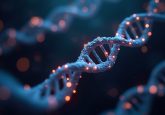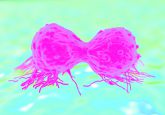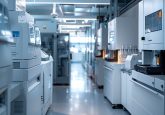Brainwaves and banter from the biomarker bandwagon

In this column from Robert MacNeill (Pharmaron; PA, USA), he continues his exploration of the ‘biomarker bandwagon’—a metaphorical take on the evolving origin-adjusted approach for LC–MS-based biomarker analysis. Prompted by recent discussions, webinars and questions from the field, Robert delves into practical considerations around quality control placement, extraction recovery and calibration curve fitting, offering guidance on how to effectively apply this approach in real-world bioanalytical settings.
 Robert MacNeill received his BSc with Honors in Chemistry from Heriot-Watt University and then his MSc in Analytical Chemistry from the University of Huddersfield, both in the UK. Robert is also a Chartered Chemist and a Fellow of the Royal Society of Chemistry. With decades of experience in all aspects of quantitative bioanalytical LC–MS method development, many of these years heading bioanalytical method development activities in the CRO domain, and a regular author and speaker, Robert is a recognized expert and innovator in the field.
Robert MacNeill received his BSc with Honors in Chemistry from Heriot-Watt University and then his MSc in Analytical Chemistry from the University of Huddersfield, both in the UK. Robert is also a Chartered Chemist and a Fellow of the Royal Society of Chemistry. With decades of experience in all aspects of quantitative bioanalytical LC–MS method development, many of these years heading bioanalytical method development activities in the CRO domain, and a regular author and speaker, Robert is a recognized expert and innovator in the field.
In his current role, Robert is Director of Bioanalysis at Pharmaron in Exton (PA, USA). In addition to directorship duties, he coordinates the bulk of LC–MS method development, also keeps abreast of innovation and technological development in the industry, leading in-house research projects and managing the associated technical writing.
In a small number of previous articles, I have alluded to the ‘biomarker bandwagon’ in terms of being loosely synonymous with the ‘origin-adjusted approach’ for the bioanalytical measurement of biomarkers by LC–MS. With the readers’ forgiveness, I will keep rolling with this analogy and we can all eagerly ‘tune in’ and forego any witticisms about ‘instrumental’ analysis. In any case, it does so happen that in the wake of some webinars, presentations and various conversations over the last little while, some fascinating and important questions have popped up about the use of the approach. We can now slide into some answers, just like the pivotal translation of a calibration line within the very dynamic of the approach.
Firstly, the matter of quality control (QC) placement where the authenticity of the matrix and analyte remain entirely undisturbed. Considering the complication of the endogenous level, we are better off using an alternative to the regular scheme for methods designed for PK assays and surrogate-based approaches for biomarkers. These well-known schemes are where we select the lower limit of quantification – low, mid and high levels according to set and familiar guidelines. Instead, for this approach, I would lean towards first performing… what else but… a standard addition to generate the calculated endogenous level in the matrix lot available and lined up for use. From this, an intuitive lowest QC would be the ‘blank’, which will have the known endogenous level as nominal. For the more concentrated QC levels, we would take that calculated endogenous concentration and multiply by, for instance, 50 or 100 for subsequent use as nominal levels. At 50x nominal, the bias would be 2%, and at 100x it would be 1%, and so on, the idea being that the innate bias becomes negligible as the endogenous becomes swamped by the overspiked concentration. At the end of the day, we would therefore have at least the endogenous level itself, maybe a 50x additional level and possibly more depending on the dynamic range, and finally a high level set numerically along the same lines as per the latest bioanalytical guidance.
This also feeds directly into the question about measuring extraction recovery in this ‘origin-adjusted’ context. The answer is to use the scheme just described for QC placement, where the bias caused by the endogenous is carefully brought to a swamped level by the overspike. A key assumption in this scenario is that the recovery is concentration-independent, as it almost always is for a well-optimized method. Otherwise, as an alternative quick measure, I would trust that an isotopologue, such as any available and sufficiently labeled analogue, would replicate the recovery for the native unlabeled perfectly well. As long as the matrix is authentic and unadulterated, naturally. Recovery is innately approximate in nature anyway, I would propose not worthy of decimal-place implied precision on the percentage scale.
Additionally, how about non-linear curve fitting in the context of this approach, where the essence, standard addition, does not seem to historically stray from the linear? I would venture that, given that it is verifiably non-linear over the given initial calibration range, we at least need a justifiably linear portion in the extrapolation. Not only justifiable but utterly convincing as linear, ideally. Fortunately, the lowest region of concentration-response tends toward the most linearity in a true typical curvilinear fit with reference to the complete range, assuming that non-specific adsorptive issues are not at play and resulting ‘upward’ curvature, a situation needing to be addressed. That is to say, it is the upper echelons where response tends to take common non-linear excursions with concentration, not at all where we would conduct extrapolations from in a standard addition-based experiment like this. Therefore yes, we can do this with a curvilinear fit, but it would not be as simple as in the case of a linear fit, since an appropriate truncation would first be required to prove the linearity prior to extrapolation from this region, followed by origin-adjustment.
So there we have it, the latest adventuring of the ‘biomarker bandwagon’, playing groovy tunes, picking up great questions, absorbing, processing, responding, and if nothing else, taking us back to our origins!
Interested in reading more of Robert MacNeill’s columns? You can find his collection here.
Disclaimer: the opinions expressed are solely that of the authors and do not express the views or opinions of their employers, Bioanalysis Zone or Taylor & Francis Group.
Our expert opinion collection provides you with in-depth articles written by authors from across the field of bioanalysis. Our expert opinions are perfect for those wanting a comprehensive, written review of a topic or looking for perspective pieces from our regular contributors.
See an article that catches your eye? Read any of our articles below for free.






